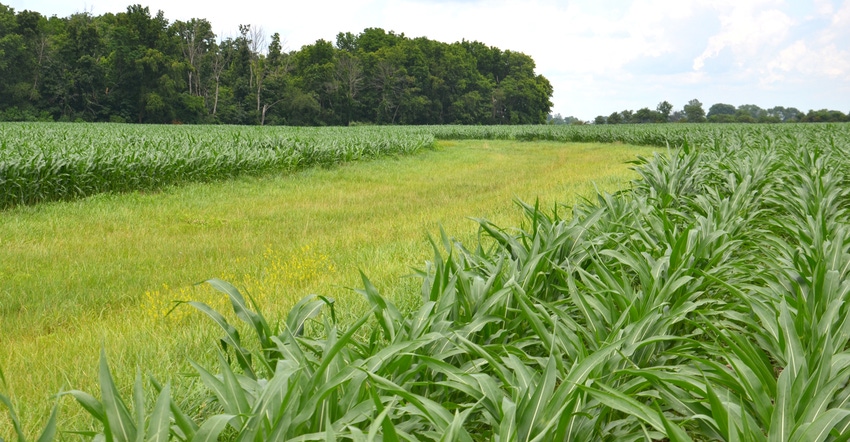May 5, 2022

Conservationists talk frequently about no-till and cover crops. Yet sometimes other practices are needed to complete the conservation system and address various resource concerns on a farm.
One of the more common concerns is good old-fashioned gully erosion. It’s usually the result of a lack of water infiltration across the entire field. No-till and cover crops develop a healthier soil that will allow better infiltration and store water for use during dry periods. However, there are times when concentrated flow requires a more aggressive approach.
If you have areas of concentrated water flow resulting in gullies, first try seeding wheat or cereal rye into those areas after harvest. Many times, a temporary cover over the winter will reduce soil loss in these areas, especially after the field is in soybeans. Many farmers make this simple practice work successfully.
Grassed waterways can also reduce the impact of concentrated water flow. However, they can be a challenge to farm around with large equipment. So, it makes sense to install them only as a last resort if the temporary cover is not sufficient. One way or the other, gullies are worth preventing. Usually, 100% of the sediment carried away by gully erosion is deposited off-site in a creek or river.
Tips for waterways
If you need a permanent grassed waterway, a few design options make them easier to farm around. With modern large equipment, it’s much easier if the waterway is relatively shallow with a design depth of only a foot. Depending on the drainage area, this could make the design width wider.
To make them easier to cross, side slopes also need to be flattened out, resulting in a wider waterway. A wider waterway may take up more acreage, but is worth the trade-offs if you can cross easily. Due to extra width, consider a tile up each side of the waterway to keep it adequately drained.
Like any other conservation practice, grassed waterways require maintenance to ensure they will continue to function correctly. A major contributor to problems with grassed waterways is end rows along each side. Many times, this results in water running down end rows instead of continuing into the waterway. Gullies could form along both sides of the waterway. With large planters, having row clutches makes it easier to plant into a waterway. Program them to shut off seed drop at the edge of the waterway.
Whether you use a retailer or do your own spraying, herbicide damage along waterway edges is another common issue. Be prepared to reseed your waterway back to design seeding width as necessary. Regularly remove any accumulated sediment from your waterway. This will ensure the waterway retains its original dimension and capacity.
Waterways not only control erosion but also filter sediment and nutrients prior to runoff entering a stream. If you’re experiencing gully erosion from concentrated water flow, and temporary seeding over the winter does not improve the issue, consider installing a grassed waterway. Contact your local Natural Resources Conservation Service or soil and water conservation district office for technical assistance in addressing your concerns.
Remember, it takes a system to solve all resource concerns on your farm. No-till and cover crops alone won’t correct every problem.
Donovan is a district conservationist with the Natural Resources Conservation Service.
About the Author(s)
You May Also Like






